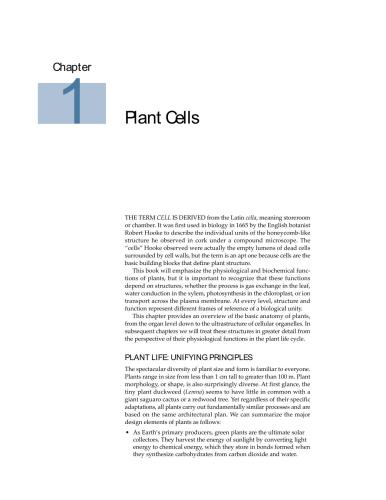Janice Glimn-Lacy, Peter B. Kaufman0-387-28870-8, 0-387-28875-9, 978-0387-28870-3
There is a balanced selection of subjects that deal with all kinds of plants. However, the emphasis is on flowering plants, which dominate the earth. Drawings show common houseplants, vegetables, fruits, and landscape plants. They also show common weeds, wild flowers, desert plants, water plants, and crop plants.
Botany Illustrated, Second Edition, has three sections. An Introduction to Plants gives you facts on everything from cells to seeds. The Major Groups section is from fungi to algae, ferns, conifers, and flowering plants. In Flowering Plant Families are magnolias to asters, and water-plantains to orchids, with the families of major interest included. You will find plants used for food, ornamentals, lumber, medicines, herbs, dyes, and fertilizers, whether wild or poisonous, or of special importance to our Earth’s ecosystem.
Topics that will be of interest to you include:
Why leaves ‘turn’ color in autumn
How certain plants devour insects
How a flower develops into a fruit with seeds
Why some plants only flower at certain times of the year
How water, nutrients, and sugars move within a plant, including tall trees
How flowers are pollinated
The ‘inside’ story of how plants manufacture their own food
How plants are named and classified
How vines ‘climb’
Why ‘pinching’ makes plants ‘bushy’
How plants reproduce sexually
Why shoots grow towards light
How specific leaf colors can indicate specific mineral deficiencies
Botany Illustrated, Second Edition, is especially easy to use because of its great flexibility. You can read the text and look at the drawings, read the text and color the drawings, or just enjoy coloring the drawings. No matter where your interests lead you, you will quickly find your knowledge of plants growing! Thus, this beautiful book will be of great value to students, scientists, artists, crafters, naturalists, home gardeners, teachers, and all plant lovers.
Table of contents :
Cover Page……Page 1
Title Page……Page 3
ISBN 0387288708……Page 4
Preface……Page 5
Color Code Clues……Page 7
Acknowledgements……Page 9
Contents (with page links)……Page 10
About the Authors……Page 14
Names and Terms……Page 16
Cell Structure……Page 18
Cell Organelles……Page 20
Cell Pigments……Page 22
Cell—Water Movement……Page 24
Cell Chromosomes……Page 26
Cell—Mitosis……Page 28
Cell Types……Page 30
Tissue Systems of the Plant Body……Page 32
Tissue—Epidermis……Page 34
Tissue—Primary Vascular System……Page 36
Root Types and Modifications……Page 38
Root Tissues……Page 40
Stem Structure……Page 42
Stem Tissues……Page 44
Stem Modifications……Page 46
Stem—Water Transport……Page 48
Stem—Food Transport……Page 50
Stem—Apical Dominance……Page 52
Stem—Growth Movements……Page 54
Leaf Types and Arrangement……Page 56
Leaf Tissues……Page 58
Leaf Modifications……Page 60
Leaf—Photosynthesis……Page 62
Leaf—Nutrient Deficiency Symptoms……Page 64
Flower Initiation in Response to Daylength……Page 66
Flower Structure……Page 68
Flower Structure Variations……Page 70
Flower Development……Page 72
Flower—Meiosis……Page 74
Flower—Pollen Development……Page 76
Flower—Ovule Development……Page 78
Flower Pollination by Insects……Page 80
Flower Pollination by Insects (continued)……Page 82
Flower Pollination by Wind……Page 84
Flower Pollination by Birds and Bats……Page 86
Flower—Fertilization and Embryo Development……Page 88
Fruit—Dry Types……Page 90
Fruit—Fleshy Types, Compound……Page 92
Seed Structure and Germination……Page 94
Major Groups; Geologic Time Scale……Page 96
Fossils……Page 98
Fossils (continued)……Page 100
Blue-greens……Page 102
Slime Molds……Page 104
Chytrids and Allies……Page 106
Fungi……Page 108
Molds, Mildews, Morels (Sac Fungi)……Page 110
Rusts, Smuts, Jelly Fungi (Club Fungi)……Page 112
Gill Fungi……Page 114
Gill and Pore Fungi……Page 116
Pore, Coral, and Toothed Fungi……Page 118
Puffballs, Stinkhorns, Bird’s-nest Fungi……Page 120
Lichens……Page 122
Dinoflagellates……Page 124
Golden Algae, Yellow-green Algae, Diatoms……Page 126
Red Algae……Page 128
Green Algae……Page 130
Brown Algae……Page 132
Brown Algae (continued)……Page 134
Stoneworts……Page 138
Liverworts, Hornworts, Mosses……Page 140
Whisk Ferns……Page 142
Clubmosses, Spikemosses, Quillworts……Page 144
Horsetails……Page 146
Ferns……Page 148
Common Ferns……Page 150
Fern Leaf Development……Page 152
Water Ferns……Page 154
Cycads……Page 156
Ginkgo……Page 158
Conifers……Page 160
Gnetes……Page 162
Flowering Plant Classification……Page 164
Major Land Plant Communities……Page 166
Magnolia Family (Magnoliaceae)……Page 168
Laurel Family (Lauraceae)……Page 170
Water Lily Family (Nymphaeaceae)……Page 172
Buttercup Family (Ranunculaceae)……Page 174
Witch Hazel Family (Hamamelidaceae)……Page 176
Elm Family (Ulmaceae)……Page 178
Beech Family (Fagaceae)……Page 180
Birch Family (Betulaceae)……Page 182
Cactus Family (Cactaceae)……Page 184
Cactus Family (continued)……Page 186
Pink Family (Caryophyllaceae)……Page 188
Goosefoot Family (Chenopodiaceae)……Page 190
Buckwheat Family (Polygonaceae)……Page 192
Mallow Family (Malvaceae)……Page 194
Pitcher-plant Family (Sarraceniaceae)……Page 196
Violet Family (Violaceae)……Page 198
Begonia Family (Begoniaceae)……Page 200
Gourd Family (Cucurbitaceae)……Page 202
Willow Family (Salicaceae)……Page 204
Mustard Family (Brassicaceae)……Page 206
Heath Family (Ericaceae)……Page 208
Saxifrage Family (Saxifragaceae)……Page 210
Rose Family (Rosaceae)……Page 212
Pea Family (Fabaceae)……Page 214
Dogwood Family (Cornaceae)……Page 216
Staff-tree Family (Celastraceae)……Page 218
Spurge Family (Euphorbiaceae)……Page 220
Grape Family (Vitaceae)……Page 222
Maple Family (Aceraceae)……Page 224
Cashew Family (Anacardiaceae)……Page 226
Rue Family (Rutaceae)……Page 228
Geranium Family (Geraniaceae)……Page 230
Carrot Family (Apiaceae)……Page 232
Milkweed Family (Asclepiadaceae)……Page 234
Nightshade Family (Solanaceae)……Page 236
Morning Glory Family (Convolvulaceae)……Page 238
Mint Family (Lamiaceae)……Page 240
Olive Family (Oleaceae)……Page 242
Figwort Family (Scrophulariaceae)……Page 244
Gesneria Family (Gesneriaceae)……Page 246
Honeysuckle Family (Caprifoliaceae)……Page 248
Teasel Family (Dipsacaceae)……Page 250
Aster Family (Asteraceae)……Page 252
Water-plantain Family (Alismataceae)……Page 254
Spiderwort Family (Commelinaceae)……Page 256
Sedge Family (Cyperaceae)……Page 258
Grass Family (Poaceae)……Page 260
Arrowroot Family (Marantaceae)……Page 262
Palm Family (Arecaceae)……Page 264
Palm Family (continued)……Page 266
Arum Family (Araceae)……Page 268
Lily Family (Liliaceae)……Page 270
Iris Family (Iridaceae)……Page 272
Orchid Family (Orchidaceae)……Page 274
Bibliography……Page 276
Glossary of Word Roots……Page 278
B……Page 280
C……Page 281
D……Page 282
E,F……Page 283
G,H……Page 284
L……Page 285
O……Page 286
P……Page 287
R……Page 288
S……Page 289
T……Page 290
X,Y,Z……Page 291







Reviews
There are no reviews yet.